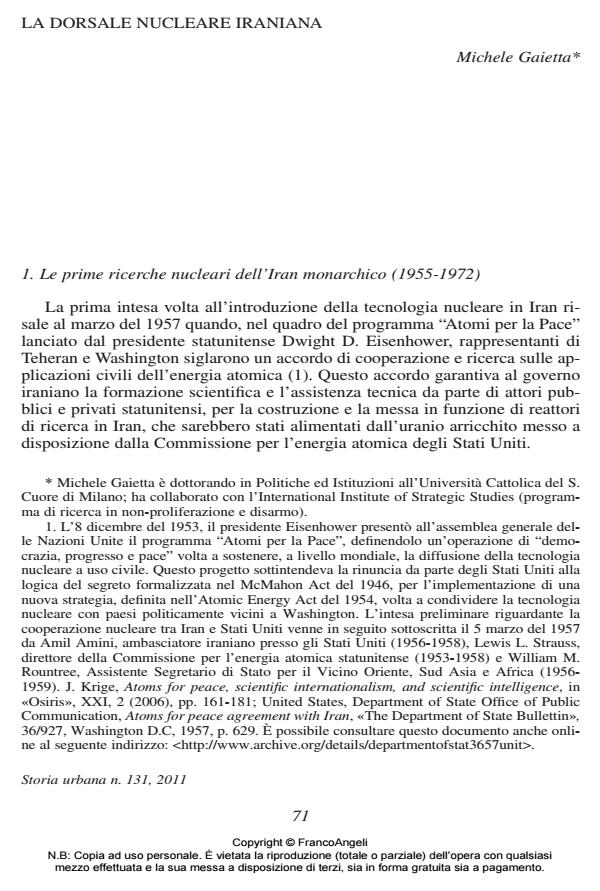The Iranian nuclear ridge
Journal title STORIA URBANA
Author/s Michele Gaietta
Publishing Year 2011 Issue 2011/131
Language Italian Pages 30 P. 71-100 File size 1551 KB
DOI 10.3280/SU2011-131005
DOI is like a bar code for intellectual property: to have more infomation
click here
Below, you can see the article first page
If you want to buy this article in PDF format, you can do it, following the instructions to buy download credits

FrancoAngeli is member of Publishers International Linking Association, Inc (PILA), a not-for-profit association which run the CrossRef service enabling links to and from online scholarly content.
In the last decade, the nuclear program has gained a huge importance in the definition of the diplomatic position of the Islamic Republic of Iran. Although it is crucial to evaluate the Iranian ambition as linked to the reshaping of the regional balance, it is important to consider this relation (Iran-Middle East) on the reverse too, elaborating on the geographical positioning of the nuclear plants. From this perspective, a sort of "ridge" is drown down by the positions of the plants, which are positioned on the Tehran- Esfahan-Bushehr dorsal, from the Caspian Sea to the Persian Gulf. The Natanz nuclear plant is situated on this "dorsal": this plant is at the very center of the most violent diplomatic disputes, and it is just some kilometers far from the international roads among the cities of Baghdad-Herat (and Kabul), Kuwait City-Ashgabat, which also link the Turkish-Armenian border (North-West) and the Iranian-Pakistan border (South-East). The political centrality of the Iranian nuclear file has a geographical centrality too, evidencing the geostrategical relevance of this country.
Keywords: Nuclear Plants Geographic constants International community
- The Trajectory of Iran’s Nuclear Program Michele Gaietta, pp.5 (ISBN:978-1-349-57841-2)
Michele Gaietta, La dorsale nucleare iraniana in "STORIA URBANA " 131/2011, pp 71-100, DOI: 10.3280/SU2011-131005